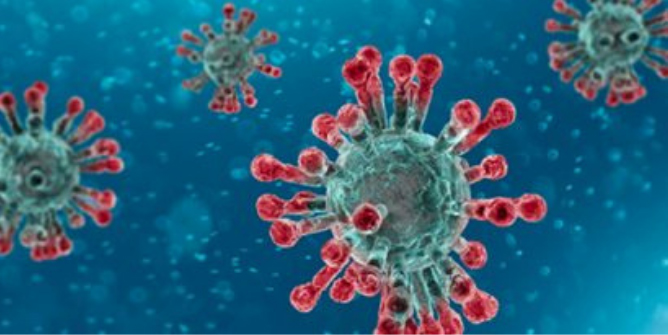
COVID-19 and Coagulopathy: Frequently Asked Questions
What is COVID-19-associated coagulopathy? Is it any different from disseminated intravascular coagulopathy (DIC)?
The most common pattern of coagulopathy observed in patients hospitalized with COVID-19 is characterized by elevations in fibrinogen and D-dimer levels, and mild prolongation of PT/aPTT. This correlates with a parallel rise in markers of inflammation (e.g. CRP). Unlike the pattern seen in classic DIC from bacterial sepsis or trauma, prolongation of the aPTT and/or PT is minimal, thrombocytopenia is mild (platelet count ~100 x109/L), and lab results supporting microangiopathy are infrequent.
Rarely patients with severe COVID-19 infection and multiorgan failure progress to a coagulopathy meeting criteria for overt DIC per ISTH criteria. This is reflected by moderate to severe thrombocytopenia (platelet count <50 x109/L), prolongation of the PT and aPTT, extreme elevation of D-dimer, and decreased fibrinogen (< 1.0 g/L).1 The utility of viscoelastic testing [i.e. ThromboElastoGraphy (TEG) and ROtational ThromboElastoMetry (ROTEM)] is under investigation for COVID-19 associated coagulopathy/DIC but should not be used routinely for patient management.
Lupus anticoagulants (LA) have been reported in some patients with COVID-19 as the reason for aPTT prolongation. Generally, LA are not associated with bleeding unless they are masking an underlying bleeding tendency or have associated hypoprothrombinemia (in which case the PT will be prolonged). The aPTT prolongation may necessitate using an anti-Xa activity assay to monitor unfractionated heparin. Clinical significance of LA in COVID-19 is unknown and limited evidence suggests that it is a transient laboratory abnormality.
What is the prognosis in a patient with COVID-19-associated coagulopathy/DIC?
Patients with a serious infection are more likely to have COVID-19 associated coagulopathy than patients with a mild infection and those who die from COVID-19 are more likely to have met the ISTH criteria for DIC compared to survivors. Elevated D-dimer at admission and markedly increasing D-dimer levels (3- to 4-fold) over time are associated with high mortality, likely reflecting coagulation activation from infection/sepsis, cytokine storm and impending organ failure.
In patients with COVID-19-associated coagulopathy/DIC, which lab parameters should be followed?
We recommend monitoring platelet count, PT and/or aPTT, D-dimer, and fibrinogen. Worsening of these parameters, specifically the D-dimer, indicates progressive severity of COVID-19 infection and predicts that more aggressive critical care will be needed; experimental therapies for COVID-19 infection might be considered in this setting. Improvement of these parameters along with stable or improving clinical condition provides confidence that stepping down of aggressive treatment may be appropriate.
What treatment or intervention should we give in someone with COVID-19-associated coagulopathy /DIC?
As for all coagulopathies, treatment of the underlying condition is paramount. Experience to date suggests that COVID-19 infection infrequently leads to bleeding despite abnormal coagulation parameters. Supportive care including blood product transfusion should be individualized. Blood component therapy should not be instituted on the basis of laboratory results alone, but reserved for those who are bleeding, require an invasive procedure, or who are otherwise at high risk for bleeding complications. Traditional risk factors for bleeding apply. There are no data to support any particular “safe” cut-off for hematological parameters and the thresholds below are for guidance only.
In patients who are not bleeding, there is no evidence that correction of laboratory parameters with blood products improves outcomes. Replacement might worsen disseminated thrombosis and further deplete scarce blood products. In a patient who is experiencing clinically-relevant bleeding, transfuse platelets (one adult dose) if the platelet count is less than 50 x 109/L, give plasma (4 units) if the INR is above 1.8 and order fibrinogen concentrate (4 grams) or cryoprecipitate (10 units) if the fibrinogen level is less than 1.5 g/L. For patients with severe coagulopathy and bleeding, consider 4F-PCC (e.g. 25 Units/kg) instead of plasma, as volume status appears to be a significant factor associated with respiratory compromise. The hemostatic effectiveness of tranexamic acid (TXA) is unknown in this setting.
Should we give therapeutic anticoagulation in someone with COVID-19-associated coagulopathy/DIC? What about those who are already on anticoagulation for atrial fibrillation?
Therapeutic anticoagulation is not required unless another indication for therapeutic anticoagulation is documented (e.g. venous thromboembolism (VTE), atrial fibrillation, or mechanical heart valve). The efficacy of intermediate or full therapeutic anticoagulation for critically ill COVID-19 patients without documented VTE is under study. In patients already on anticoagulation for VTE or atrial fibrillation, therapeutic doses of anticoagulantation should continue, but may need to be held if the platelet count is less than 30-50 x 109/L or if the fibrinogen is less than 1.0 g/L. Individual patient assessment is required to balance risks of thrombosis and bleeding.
Thromboprophylaxis with LMWH is recommended for all hospitalized COVID-19 patients in the absence of bleeding, despite abnormal coagulation tests, and held only if platelet counts are less than 20 – 30 x 109/L, or fibrinogen less than 0.5 g/L. Abnormal PT or aPTT is not a contraindication for pharmacological thromboprophylaxis. Mechanical thromboprophylaxis should be used when pharmacological thromboprophylaxis is contraindicated. The impact of dose intensity used for pharmacological thromboprophylaxis on patient outcomes is under investigation in many prospective trials.
(Version 4.0; last updated September 24, 2020)
Input from Drs. Agnes YY Lee, Jean M Connors, Lisa Baumann Kreuziger, Mike Murphy, Terry Gernsheimer, Yulia Lin, Menno Huisman, and Maria DeSancho
For additional information see:
- Moores et al Prevention, diagnosis and treatment of venous thromboembolism in patients with COVID-19: CHEST Guideline and Expert Panel Report
https://doi.org/10.1016/j.chest.2020.05.559 - Thromboembolism and Anticoagulant Therapy During the COVID-19 Pandemic: Interim Clinical Guidance from the Anticoagulation Forum
- COVID recommendations from the International Society for Thrombosis and Hemostasis
- Antithrombotic therapy in patients with COVID-19
Source: HemaWare